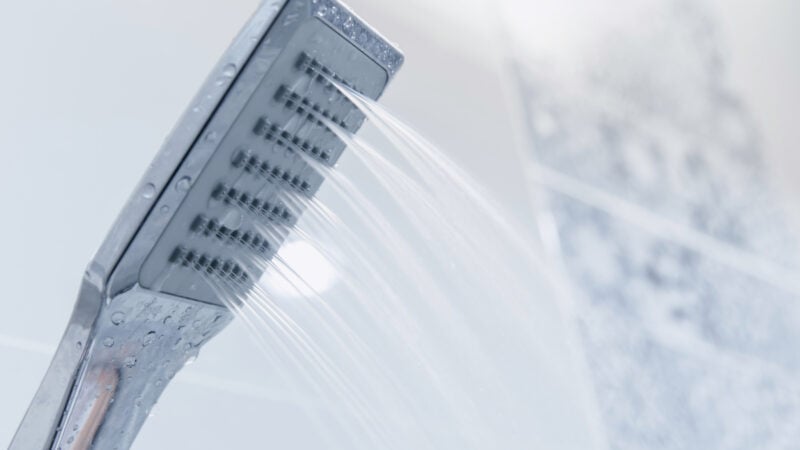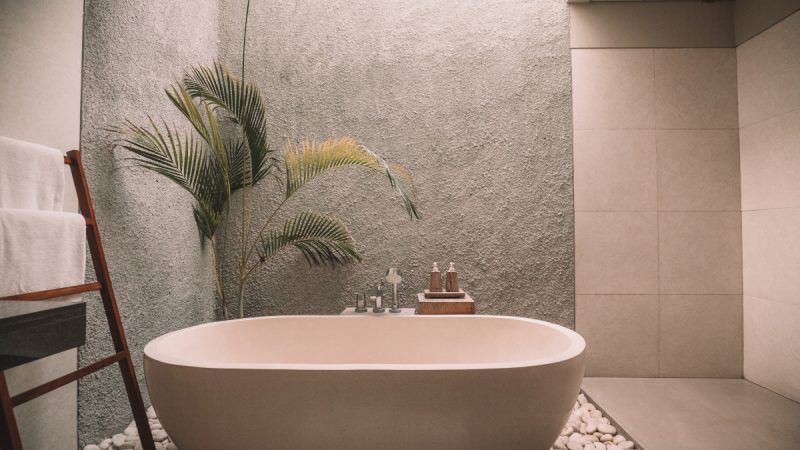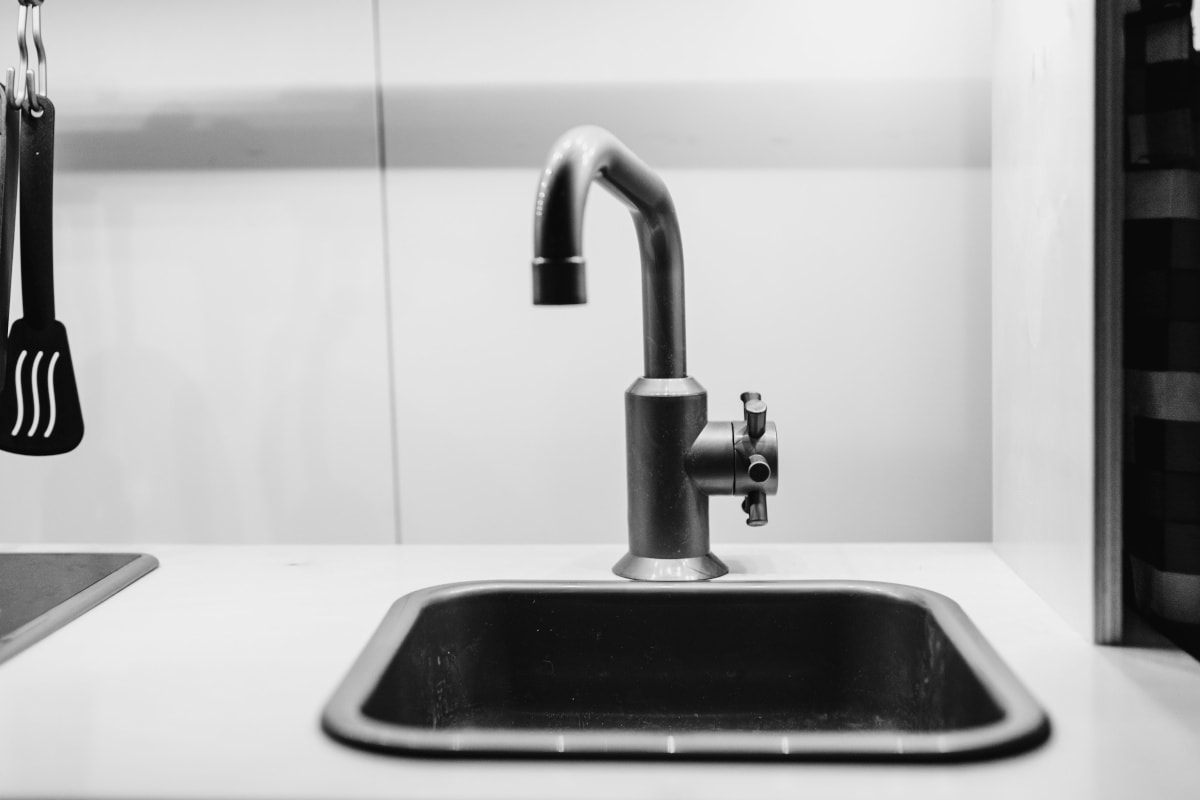How to remove iron stains from lawn and paving stones: A cost-effective guide

Picture this: you step outside on a beautiful summer morning, eager to enjoy your lush green lawn and admire the elegance of your paving stones. But instead, what greets your eyes are unsightly orange-brown stains marring the once-pristine surfaces. What could be causing this eyesore? The culprit may very well lie in the water flowing from your trusted well.
Well water is known for its high mineral content, and one mineral that often wreaks havoc on lawns and stone surfaces is iron. While iron itself is not harmful, when it finds its way onto our grass and paving stones through irrigation or rainwater runoff, it can leave behind stubborn stains that are difficult to remove.
Beyond mere aesthetics, these iron stains can have more significant implications – they can gradually damage the integrity of your lawn by inhibiting healthy growth patterns. Paving stones suffer as well; their natural beauty obscured under layers of rust-colored blotches. It’s an issue no homeowner wants to face but one that demands attention nonetheless.
In this comprehensive guide, we will dive deep into the phenomenon of iron staining caused by high iron content in well water. We will explore proven techniques and cost-effective solutions for removing these unsightly blemishes from both lawns and paving stones. So if you’re ready to reclaim the vibrancy of your outdoor spaces without breaking the bank or resorting to drastic measures, buckle up! You’re about to gain valuable insights that will help you restore pristine beauty back into your home sanctuary.
Understanding iron staining
Certain types of soil are more prone to discoloration due to iron content. Soils that have a high clay or sand content tend to be particularly susceptible. The structure and composition of these soils allow for better retention of iron particles, leading to staining when water containing elevated levels of iron comes into contact with them.
There are several factors that contribute to increased levels of iron in well water. Firstly, the geological makeup of an area plays a significant role. Areas with naturally occurring deposits rich in iron minerals will have higher concentrations in their groundwater. Additionally, the pH level of the water can promote the release and solubility of iron ions from surrounding rocks and soil.
Other contributing factors include excessive use or misuse of certain fertilizers containing high amounts of soluble iron compounds. For example, fertilizer application near sprinkler systems can dissolve the excess iron and deliver it directly onto lawns or paving stones through irrigation.
By understanding these aspects, homeowners can gain insights into why they might be experiencing issues related to iron staining on their properties’ outdoor surfaces. Armed with this information, they can then focus on effective strategies for removing such stains efficiently and cost-effectively.
How to identify excessive iron stains in lawns and pavers
Discovering iron stains on your lawn or paving stones can be disheartening, but recognizing the signs early on is crucial for effective cleaning. Here are some common indications that your well water may have a high iron content:
- Orange or brown discoloration: One of the most obvious signs of excessive iron stains is the appearance of orange or brown discoloration on your lawns and pavers. This staining may occur in patches or cover larger areas, making it unsightly and challenging to ignore.
- Rusty residue: Another telltale sign is the presence of rusty residue left behind after watering your lawn or periods of rainfall. This residue can leave streaks along walkways and driveways, further indicating the potential presence of excess iron in your well water.
- Changes in vegetation color: The impact of excessive iron may extend beyond just staining surfaces; it can also affect plant growth and health. If you notice sudden changes in vegetation color, such as yellowing leaves or stunted growth, it could be an indicator that high levels of iron are present.
- Increased algae growth: Iron-stained lawns and pavers provide a conducive environment for algae to thrive. If you observe greenish-black spots forming over time, particularly near moist areas with higher exposure to irrigation water, it suggests an underlying issue related to excessive iron content.
By being aware of these signs and symptoms associated with excessive iron stains on lawns and paving stones caused by well water, you will be better equipped to address this issue promptly before it worsens.
The causes behind excessive iron stains
Unveiling the mystery behind excessive iron stains requires a deeper investigation into the multiple fronts of this issue. Surprisingly, it all commences with our daily companion, water. Specifically, hard water rich in minerals like iron is the primary culprit, causing persistent yellow to reddish-brown stains on sinks, tubs and clothes. This is essentially due to the oxidation process, as when exposed to air; the soluble ferrous iron transforms into insoluble ferric iron, leaving unsightly marks everywhere.
However, there’s more than what meets the eye. Your domestic practices may also be indirectly nurturing these stubborn stains. Frequently overlooked sources include rusty pipelines and appliances that constantly interact with water or have damp environments — such as dishwashers and washing machines. Iron particles from these rusted materials often infiltrate into your laundry cycle or water system and thus create a vicious puddle of lingering stains.
Over time, these pervasive rust stains can infiltrate your otherwise pristine furniture and floors. A splash of water from the dishwasher or a leaky washing machine may seem harmless at first glance, but when mixed with iron particles they become veritable breeding grounds for unsightly corrosion.
High levels of humidity are an often overlooked factor contributing to this issue. Moisture-laden environment especially in damp basements or bathrooms catalyzes the oxidation process exponentially leading to rapid formation of rust stains. When surfaces remain wet for prolonged periods, it effectively builds a conducive avenue for further corrosion development.
The concern extends beyond aesthetics as well; long-term exposure to excessive iron could potentially pose health hazards such as hemochromatosis – an ailment that sees too much iron absorption in the body. This dire probability underscores why getting ahead of rust growth is so crucial despite how trivial it might initially appear.
Methods for cleaning iron-stained paving stones
Preparing the affected area
Before starting the cleaning process, it’s important to prepare the affected area. Begin by clearing any debris or loose dirt from the paving stones with a broom or a leaf blower. This will ensure that you have a clear surface to work on and prevent any further damage during the cleaning process.
Non-Acidic cleaning solutions
Natural and commercial cleaners can be effective in removing iron stains from paving stones without causing harm to surrounding vegetation or risking damage to the stones themselves. There are several options available in both categories.
In terms of natural cleaners, one popular choice is vinegar mixed with water. Simply dilute white vinegar with equal parts of water in a spray bottle and apply it directly onto the iron-stained areas of your paving stones. Let it sit for about 15 minutes before scrubbing gently with a stiff brush and rinsing thoroughly.
For those who prefer commercial products, there are specialized stain removers formulated specifically for iron stains on outdoor surfaces. These products often contain ingredients like oxalic acid or rust converters which chemically react with iron oxide to dissolve stubborn stains. Follow manufacturer instructions carefully when using these cleaners, as their potency may vary.
Acid-based cleaning techniques
If non-acidic solutions fail to remove stubborn iron stains, you may need to consider more aggressive methods involving acids. It’s important to exercise caution when using acid-based cleaners as they can potentially cause harm if not used correctly.
One common approach is using diluted muriatic acid (hydrochloric acid) which has proven effective against tough iron stains on paved surfaces but should be handled with great care due to its corrosive nature. Before applying any acid solution, make sure you wear protective gear such as gloves, goggles, and suitable clothing that covers your skin completely.
Mix one part muriatic acid with ten parts water in a plastic container outdoors away from plants and pets. Apply the mixture to the iron-stained areas using a brush or sprayer, allowing it to sit for a few minutes before scrubbing gently with a stiff-bristle brush. Rinse thoroughly with clean water afterward.
Hiring professionals
If you prefer to leave the task of removing iron stains from paving stones to professionals, there are specialized companies that offer power washing or professional cleaning services for outdoor surfaces. This option may be worth considering if you have extensive staining or are concerned about potential damage caused by DIY methods.
Keep in mind that hiring professionals may come at an additional cost, so it’s important to weigh the benefits against your budget constraints. Additionally, ensure that any company you choose has experience and expertise in dealing specifically with iron stains on paving stones for optimal results.
Cost estimation
a) DIY cleaning tools product costs
When it comes to removing iron stains from your lawn and paving stones, there are a few cost-effective tools and products that you can use. Here’s an approximate breakdown of the costs:
- Oxygenated cleaners: These cleaners contain chemicals that react with the iron stains, breaking them down for easier removal. A 32-ounce bottle typically costs around $10-$20.
- Stiff-bristle brush: An essential tool for scrubbing away stubborn stains on paving stones and getting into hard-to-reach areas. The cost of a good quality stiff-bristle brush ranges from $5 to $15.
- Pressure washer (optional): If you already own a pressure washer or plan to invest in one, it can be an effective tool for cleaning large outdoor surfaces like driveways or patios with minimal effort. Prices for pressure washers vary widely based on their size, power, and features but generally range from $100 to over $500.
- Rust removers: If the iron stain is particularly stubborn, you may need a specialized rust remover product. These often come in aerosol cans or liquid form and usually range from $10 to $30 per unit.
It’s important to note that these prices are estimates and may vary depending on factors such as brand, location, and availability.
b) Professional services costs
If you prefer not to tackle the iron stain removal yourself or if your staining issue is severe or extensive, hiring professional services is another option worth considering. The cost will vary depending on various factors such as the square footage of affected areas and location-specific rates.
Professional power washing companies typically charge between $0.08-$0.40 per square foot for surface cleaning using high-pressure water jets specifically designed for exterior spaces such as stone tiles or concrete pavements.
However, keep in mind that hiring professionals might significantly increase the overall cost compared to DIY options. It’s crucial to weigh the extent of the staining problem against your budget and available resources before deciding whether to hire professionals for iron stain removal.
Preventive measures & maintenance tips
- Water Treatment Options: One of the most effective ways to prevent iron stains on your lawn and paving stones is by treating your well water. There are various water treatment options available that can help reduce iron content in your water supply. For example, using an iron removal filter or installing a whole-house water softener system can significantly minimize the chances of staining occurring in the first place.
- Regular Cleaning and Maintenance: Implementing a regular cleaning and maintenance routine for your lawn and paving stones can also help prevent iron stains from becoming a recurring issue. Sweep or rinse off any debris or leaves regularly to avoid build-up and potential interaction with iron deposits. Additionally, consider applying sealant products specifically designed for protecting paving stones from discoloration caused by mineral deposits.
- Increase pH Levels: Adjusting the pH levels of your well water can also contribute to reducing iron stains on lawns and paving stones. Iron tends to oxidize more readily when exposed to higher pH levels, which leads to precipitation and subsequent staining issues.
- Collect Rainwater: Another preventive measure you can take is collecting rainwater for use instead of relying solely on well water for irrigation purposes. Rainwater has much lower concentrations of minerals like iron, making it less likely to cause staining.
- Be Mindful Of Fertilizer Usage : Some fertilizers contain high amounts of nutrients such as nitrogen or sulfur that may react with iron present in well waters leading severe discoloration . Switching over ferliser compositions containing low nutrient may be helpful.
By implementing these preventive measures and maintenance tips, you can significantly reduce the occurrence of iron stains on both your lawn and paved areas.These methods not only save you time but also money spent on repeatedly removing stubborn stains
Conclusion
If you have noticed unsightly iron stains on your lawn or paving stones, it is likely due to the high iron content in your well water. While this may seem like a frustrating problem, there are effective ways to remove these stains and restore the beauty of your outdoor spaces.
We discussed several methods for removing iron stains from both lawns and paving stones. From using specialized cleaning solutions like oxalic acid or hydrogen peroxide to natural remedies such as vinegar or lemon juice, there are options available for every preference and budget. Remember to always follow instructions carefully when using any cleaning products and test them in inconspicuous areas first.
Taking action now will prevent further damage to your landscape and ensure that you can enjoy the full potential of your outdoor living spaces. Don’t let those pesky iron stains dampen the beauty of your lawn or pave stone surfaces any longer! Try out some of these cost-effective methods today and see how easily you can restore their pristine appearance.
So go ahead, roll up your sleeves, gather the necessary supplies, and say goodbye to those stubborn iron stains once and for all! Your vibrant green lawn and perfectly clean paving stones await you. Take control of your home’s curb appeal today!



